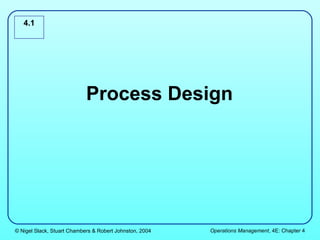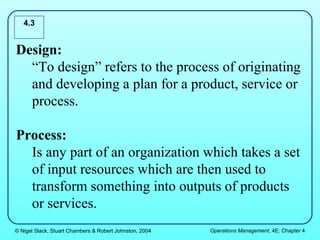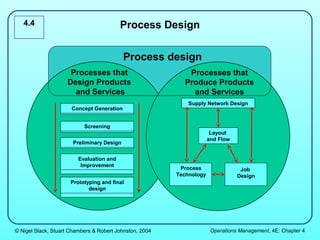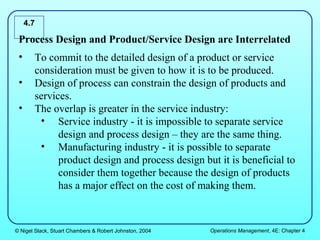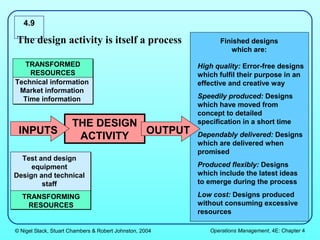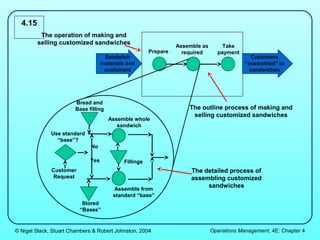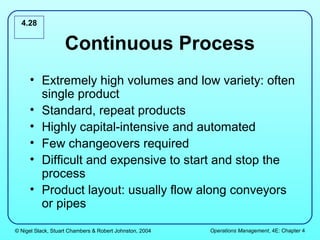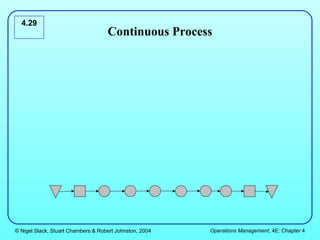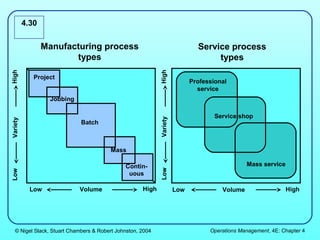This document discusses process design and different types of processes. It covers that design involves planning for products, services, and processes. Process design and product/service design are interrelated, with decisions in one influencing the other. The chapter then describes different types of processes including project, jobbing, batch, mass production, continuous, and various service processes. It emphasizes that process design must consider objectives like quality, cost, speed, dependability and flexibility.
